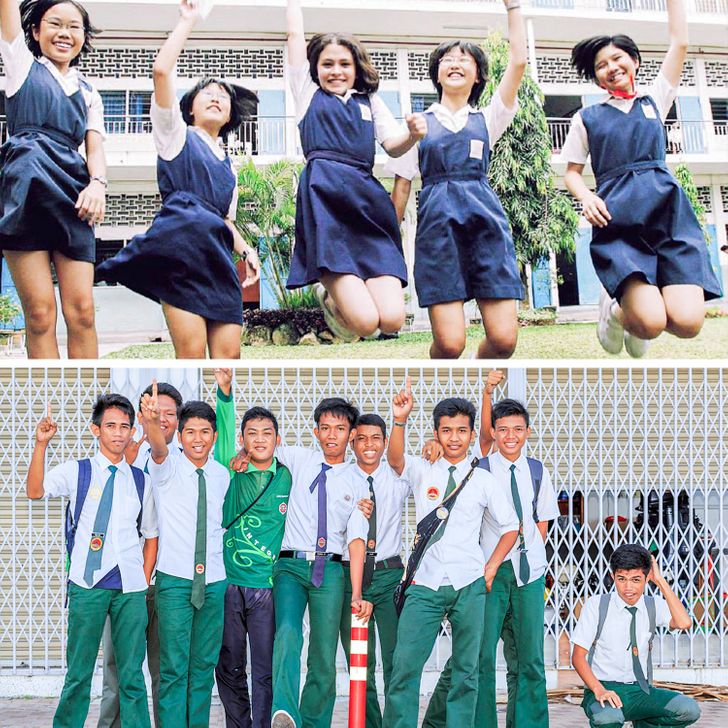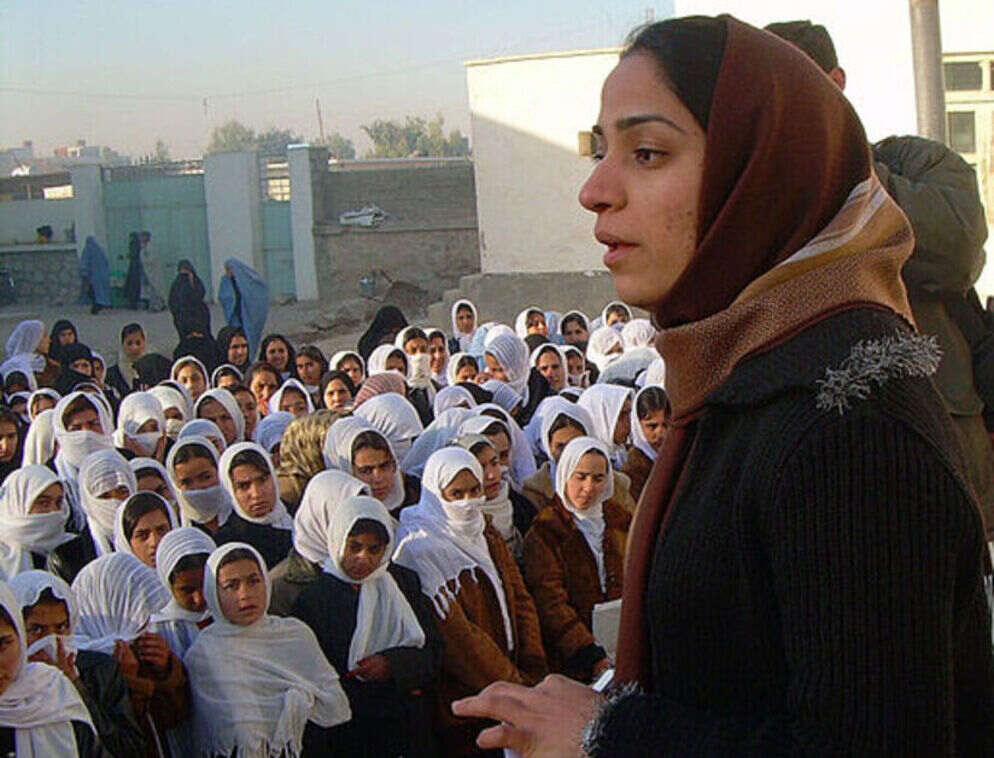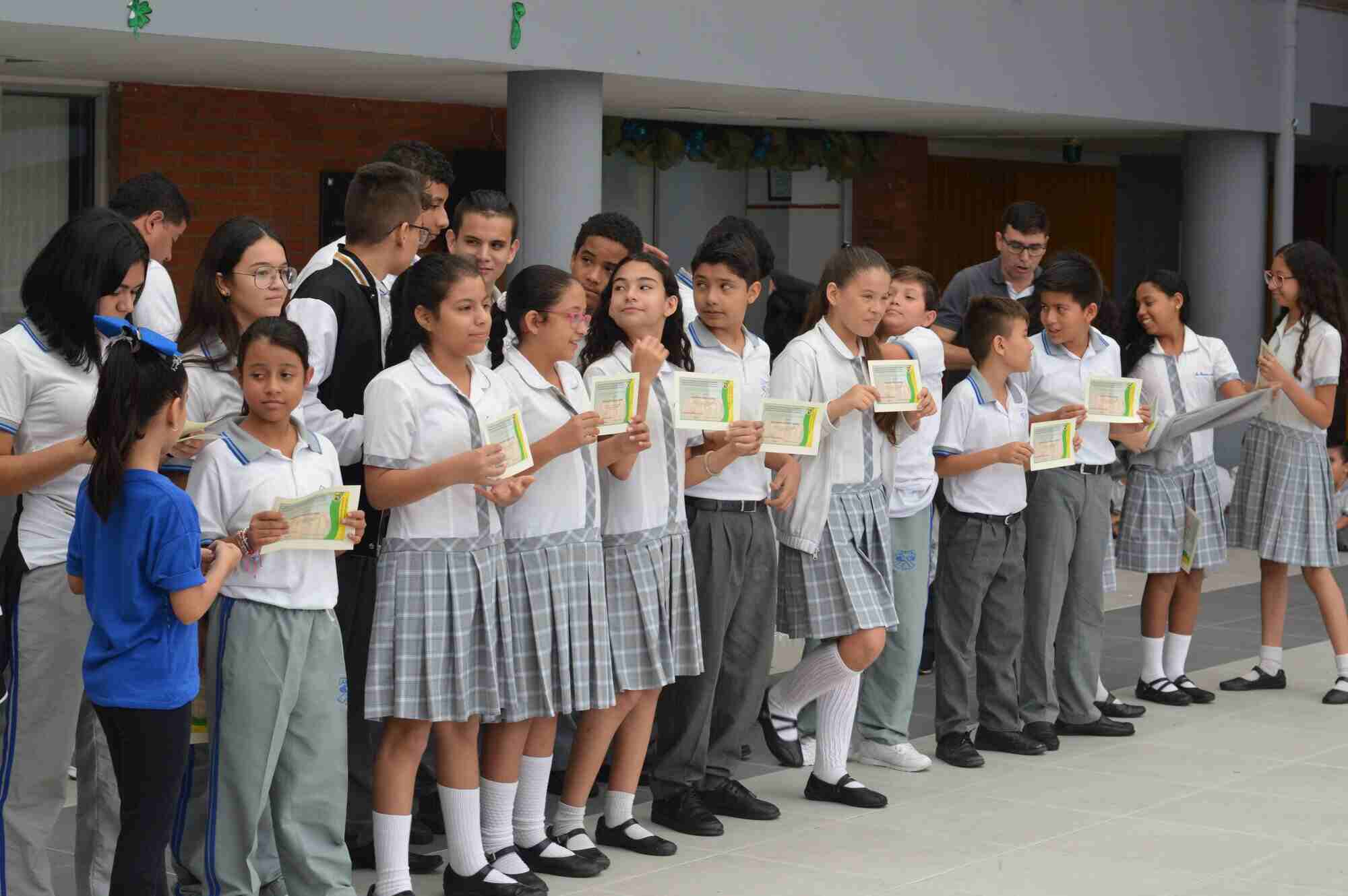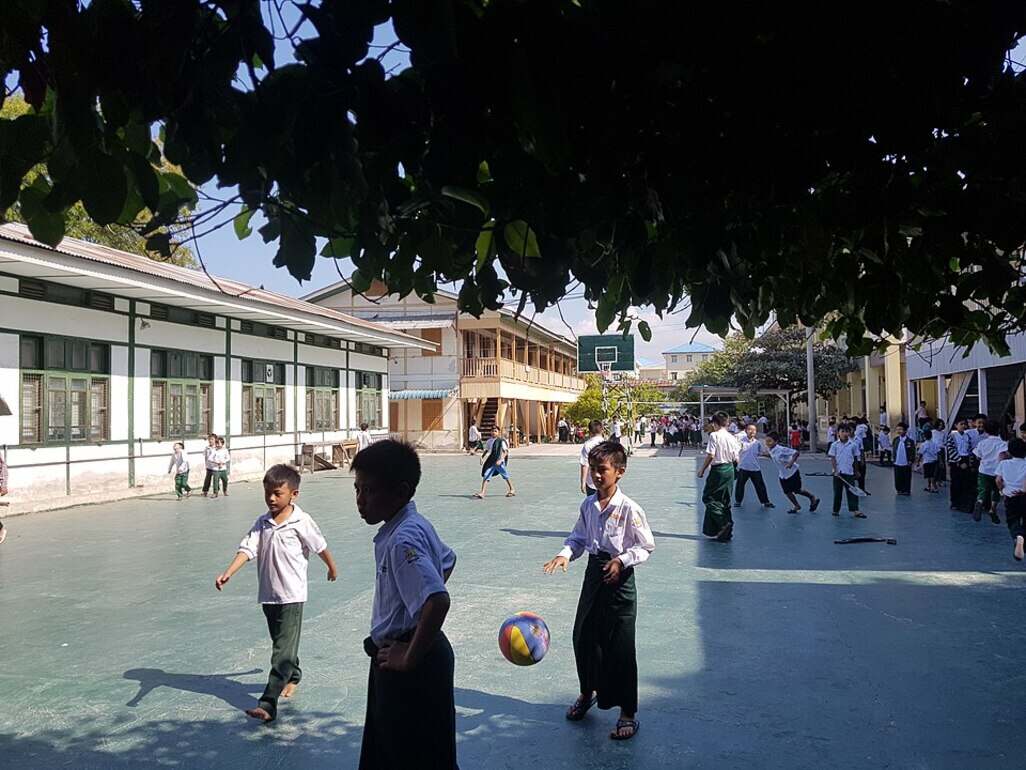Discover How Students Dress For School Across The Globe
Take a journey around the world to explore the unique school uniforms that students wear in different countries.
From India to Nigeria, and North Korea to the United Kingdom, you’ll uncover the varying styles and see just how diverse uniforms can be. So if you’re curious to find out more, then come along and join us on this global educational adventure!
Cuba
Cuban children proudly display their allegiance to the Communist Party with their distinctive school uniforms: maroon and white with a neckerchief in either blue or red. But only the most dedicated students receive the coveted red scarf – a symbol of their commitment to their country.

Source: Commons.wikimedia
The scarves are provided by the state, along with the rest of their uniforms. Nothing is more symbolic of Cuban youth’s patriotism and pride than these red scarves.
China
Chinese students take school uniforms to the next level with five different uniforms for different seasons and occasions! From traditional matching outfits to modern designs tailored to each student’s tastes, these uniforms are anything but boring.

Source: Commons.wikimedia
While the casual uniforms are usually identical for both boys and girls, some schools are allowing students to have input into what their uniforms look like, so students can display their individual styles. With so many options, no two students have to look the same in the hallways.
Ghana
Every child deserves the right to a primary education, and the Ghanaian government is striving to make sure this is possible. In 2010, it launched a free school uniform policy for elementary-level pupils, making sure no family had to worry about affording the required clothing.

Source: Teepr
Every public school has the same uniform, with only the chest emblem distinguishing separate institutions. With this policy in place, children in Ghana can now focus on their schoolwork instead of worrying about the cost of uniforms.
Sierra Leone
The vibrant culture of Sierra Leone is reflected in its school uniforms, which are notably different from those of other countries. The blue dresses, neckerchiefs and unique headwear make for a smart, unified look that resonates with school children all over the world.

Source: Corriere
Unfortunately, many children in Sierra Leone are unable to attend school due to lack of resources to purchase the necessary uniform. It’s time that resources are invested to ensure all children in Sierra Leone can access education and proudly wear their school uniforms.
Syria
In 2003, the government of Syria decided to bring a splash of color to their school uniforms. In an effort to promote peace in the Middle East, elementary pupils now wear all blue, while intermediate students add pink to their outfits. Secondary school students have a choice of blue, pink, or grey.

Source: Commons.wikimedia
This move has transformed their previous khaki desert-style uniforms into a vibrant display of unity and hope. No matter what school they go to, students are now a part of a colorful tapestry of peace.
Bhutan
Step back in time with Bhutan’s traditional school uniform! Boys must wear a knee-length robe, known as a “gho”, complete with a handy pocket in front. Girls, on the other hand, wear ankle-length dresses comprised of a blouse and a “kira”, a piece of rectangular cloth.

Source: Teepr
This timeless attire has remained largely unchanged since the 17th century and the material used alternates between cotton and wool depending on the climate. So, take a journey and experience the rich culture of Bhutan through its traditional school uniform.
Sri Lanka
The school uniforms of Sri Lanka are a sight to behold! A predominantly white color scheme with only a hint of blue for contrast, boys wearing white trousers and girls donning strictly white items of clothing.

Source: Teepr
It’s enough to make you wince at the thought of the cleaning bill! Fortunately, the government offers vouchers to purchase uniforms, or the material to manufacture them, for free, to help alleviate the cost. Sri Lanka is a sea of white with its uniquely uniformed students!
Japan
Japanese school uniforms are a unique cultural phenomenon, with the girls’ sailor-style outfits being particularly iconic. Drawing inspiration from military wear from the Meiji-period, these uniforms are still in use in some schools today, while others have opted for a more Western-style look.

Source: Commons.wikimedia
Boys usually wear a blazer or vest with non-matching trousers, and there are also special warm-weather and sports variants. Whether you opt for the traditional look or a more modern take, Japanese school uniforms are sure to make you stand out in style!
United Kingdom
The United Kingdom takes a unique approach to school uniforms, allowing individual schools to decide amongst themselves what their students should wear in the classroom.

Source: En.wikipedia
The uniforms, usually consisting of a polo shirt and sweatshirt, or a shirt, tie and blazer, must also adhere to the country’s equality laws, ensuring that no one is discriminated against, including due to religious reasons.
Australia
Dressing up for school can be a daunting task in Australia. With uniforms being mandatory in most schools, it is up to each school to decide what exactly the uniform should be. Despite the heat, most boys are not allowed to wear shorts past the age of 13.

Source: Worldschooluniform
If they are allowed to, they must wear knee-length socks with them. Girls, on the other hand, usually wear skirts and dresses, even during winter, although some schools permit trousers. So, when it comes to Australian schools, dress to impress!
North Korea
North Korea is a notoriously oppressive state, yet one thing that it shares with other countries is its compulsory school uniforms. Students are required to wear a plain white blouse or shirt and dark trousers or skirts, accompanied by the iconic red scarf, reflecting the color of the ruling party.

Source: Gokicker
This red scarf has become a symbol of the nation, defining the students’ identity and allegiance to the ruling party.
India
In India, having the right uniform is essential for students. With shirts, trousers, skirts and ties forming the basis of most school uniforms, students must always be smartly presented. Those from certain religious backgrounds may also be allowed to wear turbans or veils.

Source: Commons.wikimedia
However, dyed hair and ponytails are not allowed in most schools. Looking good is not just about making a good impression, it’s also about showing respect. So, when wearing a school uniform, remember: dress to impress and respect!
South Africa
In South Africa, there are no hard and fast rules on school uniforms. With no legislation on gender-neutrality, there are often distinct differences between what boys and girls wear. Yet despite the differences, students can take comfort in the fact that their school uniform is seasonally adaptable.

Source: Owen
In the summer, a lighter, more breathable fabric can be worn, while the winter months are perfect for a warmer and thicker ensemble. Whatever the season, school uniforms in South Africa certainly make a statement.
Vietnam
From the Mekong Delta to the North, school uniforms in Vietnam are anything but uniform! Students in most schools can be seen wearing a white shirt with dark trousers, while private schools may also include skirts, blazers and ties in their dress codes. Girls in the Mekong Delta often don the traditional áo dài, consisting of a white tunic and trousers, as everyday attire.

Source: Commons.wikimedia
The áo dài is usually reserved for formal occasions in the North. With so many different varieties of school uniforms, students in Vietnam truly have an amazing opportunity to showcase their individual styles!
Nepal
A school uniform can be a barrier to education for many children in Nepal. To attend elementary school, kids must wear the correct uniform consisting of a sweater, shirt, and tie, trousers for boys, and skirts for girls. As pictured, the typical Nepalese school uniform is smart and neat.

Source: Elespectador
Unfortunately, this uniform can be unaffordable for some families, standing in the way of their children’s education. With the help of generous donations, this barrier can be overcome and more children can have access to a quality education.
Ukraine
Since Ukraine’s independence from the Soviet Union in 1991, school uniforms have undergone drastic changes. Whereas in the past all students within the U.S.S.R. were required to wear the same uniform, nowadays it’s largely up to individual schools.

Source: Tumblr
These days, while elementary school kids still don uniforms, other school students don’t wear uniforms at all, with each school having the discretion to set their own policies when it comes to this.
Nigeria
In sunny Nigeria, where temperatures often soar, boys can opt for shorts as part of their uniform. To ensure no child is deprived of an education, initiatives have been launched to provide uniforms for those from the poorest families.

Source: Mglnews
For example, in Lagos, over 7,000 boys and girls have already benefited from a program across nine elementary schools. As a result of this initiative, these children can now attend school with pride and dignity, dressed as their peers are.
Hong Kong
From the traditional braces in the girls’ uniforms, to the sailor suits of kindergarten kids, Hong Kong is home to some of the most unique and stylish school uniforms in the world. As a former British colony, it’s no surprise that the uniforms in Hong Kong are often similar to those of the UK.

Source: Commons.wikimedia
But some older Christian girls’ schools still honor their heritage by wearing traditional Chinese attire. So, if you’re looking for a hint of culture and fashion, check out the unique uniforms of Hong Kong!
Philippines
Schools in the Philippines may vary in some ways, but one tradition has remained the same for many years – wearing a uniform. Usually, this consists of a white top with dark trousers or a checkered skirt for girls. To complete the look, some schools also require a blazer and neckerchief.

Source: Alamy
In 2008, the Philippine government did something remarkable – it abolished the need for students to wear uniforms. This change was to help families struggling with money, allowing them to save on the costs of buying uniforms. Goodbye uniforms, goodbye financial struggles.
Uzbekistan
Say goodbye to dull uniforms, and say hello to the uniform revolution in Uzbekistan! In 2017, the Uzbekistan government announced plans to introduce a single, cohesive uniform for the entire nation, involving both parents and experts in its design.

And the outcome? Smart, stylish, and ornate uniforms with collars and sleeves that will have everyone looking their best. Whether you’re a student, teacher, or parent, who could possibly complain about these fancy new uniforms?
Haiti
Haiti is well known for its unique French-based education system. Most primary schools are privately owned and operated, and students are required to wear uniforms consisting of brightly colored short-sleeved shirts. For instance, in Terre Blanche, elementary students might wear a light blue gingham-checked top with pants or a skirt.

Source: Christian Ender/Getty Images
Education is highly valued in this Caribbean country, and children are encouraged to reach their full potential. Even with the limited resources available, Haiti’s educational system continues to strive for success.
Turkey
School uniforms in Turkey are diverse and interesting. Middle school boys wear gray uniforms with white shirts, while girls wear white shirts and skirts. Elementary school students wear one-piece black or navy blue uniforms, though each school may have its own dress code.

Source: IV Andromeda/Shutterstock
It’s interesting to note that the variety of uniforms changes depending on the region and the school. Even though they were abolished in 2012, some schools still require their students to wear uniforms. Whether you’re looking for a classic, sophisticated style or something more modern, Turkey offers it all.
Malaysia
When it comes to schoolwear, Malaysian students have plenty of options! Little girls can opt for a classic look with a navy blue apron and a white shirt, or a white tunic over a skirt. Boys can choose between long or short pants, depending on the weather.

Source: Cavernosa/Wikimedia Commons/Uwe Aranas/Creative Commons
As for middle-schoolers, boys can go for green pants and a tie, while girls can wear a skirt, apron, or a full-sleeve tunic. With all these options, you can look stylish and feel comfy at school!
Thailand
Ensuring your child looks their best for school doesn’t have to be a challenge in this Asian country where uniforms are mandated for all students. Boys in elementary school can don khaki, black, or navy blue pants and short-sleeved shirts, ankle socks, and black or brown shoes. Girls in elementary school don baggy shirts with a bow in front and calf-length skirts – both with the child’s name embroidered on the front.

Source: JINNARITT/Depositphotos
In uniform, children can focus on their studies and feel proud of their school’s dress code. Dress your child for success with uniforms!
Indonesia
Take a stroll through the streets of Jakarta and you’ll be amazed at the vibrant uniforms worn by the students. Elementary school students have the option of wearing either red skirts or pants, while in the first years of middle school, navy blue is a popular choice. Traditional and conservative, these uniforms are required by all schools in Indonesia.

Source: SURZet/Depositphotos
Every grade also has its own color codes, making the streets of Jakarta come alive in a plethora of colors. So, experience the colorful diversity of school uniforms in Indonesia and marvel at the sight!
Afghanistan
The religious beliefs of this country are reflected in their choice of uniform for their school students. In Afghanistan, their schoolgirls are required to don white headscarves alongside black knee-length dresses paired with leggings. However, the country’s leaders are recently motioning to introduce a Sharia dress code for both boys and girls.

Source: Wikimedia Commons
This move hopes to establish the use of headscarves, cloaks, and long tunics, paired with different colors of baggy pants.
Colombia
In Colombian schools, all their students, both in private and public schools, are required to wear school uniforms. Here, their uniforms usually consist of two sets. There is one for their everyday use and another for all their physical education activities.

Source: cosfa2014/Twitter
For the schoolgirls, their uniforms generally include knee-length skirts, a vest, white t-shirts, and white socks. Similarly, the boys wear long, dark-colored trousers and short/long-sleeved shirts. In Colombia, the choice of designs and colors varies.
Dominican Republic
Like many other countries around the world, school uniforms are generally mandatory in DR. Regardless of sex or gender, all school students are required to wear khaki bottoms, that is, khaki skirts for girls and khaki shorts or trousers for boys.

Source: Getty Images
Up until 2017, pairing khaki bottoms with blue shirts was the standard. However, the Ministry of Education eventually introduced a color-coded system for school uniforms. This includes different colored polo shirts based on the geographical location of each school.
Germany
Traditionally, they have never had school uniforms, and almost all public and private schools don’t. Germans also opt for the term “school clothing” (Schulkleidung) and generally avoid using the word uniform.

Source: Getty Images
Over the years, there has been a back-and-forth about whether or not school clothing should become mandatory, especially after an incident back in 2006 when two Muslim girls wore burkas. Those against the move to introduce school uniforms have continued to fight against attempts to make it mandatory.
Myanmar
Public schools in Myanmar are mandated to wear uniforms like in this image. On the 14th of February, 1966, the government established a “White-Green” uniform for schools.

Source: Wikipedia
Boys are to wear a white shirt paired with either short or long green pants. Likewise, girls wear a white blouse with a skirt or pants. Then once they reach the 5th standard up until their matriculation, they wear their traditional Burmese attire. This system brings a colorful uniformity to Myanmar’s educational environment.
